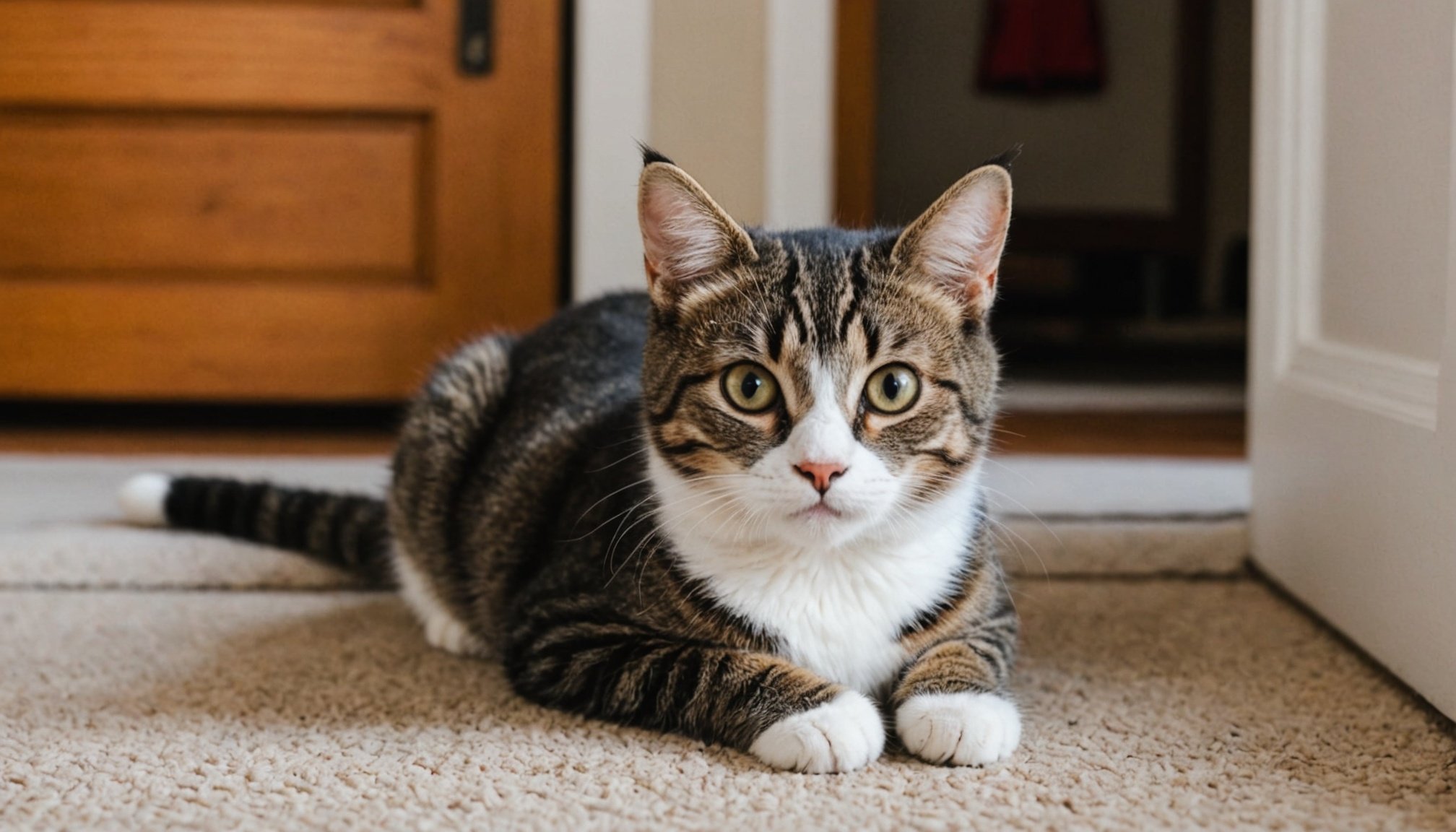Understanding Cat Behavior and Children’s Interaction
Fostering a harmonious relationship between cats and children requires understanding both parties’ needs. Understanding cat behavior is crucial when introducing a new furry friend into a home with children. Cats thrive on consistency and can be wary of sudden changes. This means assessing their comfort levels, particularly in new environments.
Children’s behavior can significantly affect a cat’s comfort and safety. Sudden movements, loud noises, or rough handling can cause stress, potentially leading to defensive actions from the cat. Educating children on being gentle, using soft voices, and respecting a cat’s space can help prevent undue stress.
A voir aussi : Creating a Cat-Friendly Outdoor Catio: A Guide for Cats with Mobility Challenges
Creating safety for both cats and children is paramount. It involves teaching children the importance of safe interactions: understanding cues such as a cat’s body language, recognizing the signs of irritation or fear, and knowing when to give the cat space.
To foster positive interactions, there are strategies such as:
Cela peut vous intéresser : Top Strategies for Keeping Your Feline Friend Entertained While You”re Out
- Supervised playtime, where both parties are engaged equally
- Teaching children the concept of personal space for pets
- Encouraging gentle petting and rewarding calm behavior
Understanding and implementing these practices ensures a safe and happy coexistence for cats and children.
Preparing Your Home for a Cat
Bringing a new cat into your home requires careful preparation to ensure safety for both your pet and your family, especially when children are involved. Here, we’ll explore how to cat-proof different areas, create safe havens, and manage shared spaces to foster harmony.
Cat-Proofing Areas
To create a cat-friendly environment, consider minimizing hazards like uncovered cables, which can be chewed, or toxic plants, which might be ingested. Ensure windows have secure screens to prevent accidental falls. It’s similar to childproofing, as both require removing potential dangers.
Designating Safe Spaces for the Cat
Cats benefit from having their own retreat. Designate a quiet, cosy corner with their bed, toys, and scratching post. This safe haven allows them to escape noise and activity. It’s advisable to cat-proof this area, ensuring it’s free from objects that could be harmful.
Managing Shared Spaces
When cats and children share spaces, child safety is crucial. Teach children to respect the cat’s boundaries, avoiding chasing or startling them. Setting up child-proof gates or barriers can create separate areas when needed. This helps to minimise conflict, providing peace of mind for the whole family.
Introducing Your Cat to Your Children
Bringing a new cat into your home can be a joyful experience for the entire family, but it’s essential to ensure a smooth transition for both your new pet and your kids. Establishing harmony during a cat introduction involves understanding the needs of both parties, setting the scene for a successful kids introduction.
Steps for a Smooth Introduction
Begin slowly by allowing your cat to explore its new environment at its own pace. Keep the initial interaction short and supervised. Introduce one child at a time to prevent overwhelming the cat. This gradual approach can help establish harmony between your cat and kids.
Teaching Children How to Interact
Educate your children on the importance of gentle and respectful interaction. Show them how to softly pet the cat and recognize its personal space. Encouraging them to speak softly around the cat can help minimize stress and build trust.
Understanding Initial Reactions
It’s vital to observe your cat’s first responses to its new setting. If it appears stressed or hides, give it time to adjust without pressure. Recognizing initial behaviors can aid in tailoring the cat introduction to ensure a peaceful coexistence.
Ensuring Mutual Respect and Safety
Mutual respect is key when kids interact with cats. Setting boundaries ensures safe and enjoyable experiences for both.
Setting Rules for Interaction
Ground rules create harmony. Children must respect boundaries. Teach them to approach cats gently, watch body language, and avoid startling movements. Clear rules prevent unintentional harm.
Encouraging Gentle Play
Play should be fun, not stressful. Guide children to use safe toys and avoid direct hand play. Encourage imaginative games like using feather wands. These interaction guidelines foster joyful and safe play sessions, ensuring the cat remains comfortable and happy.
Recognizing Signs of Stress or Discomfort
It’s crucial to recognize stress signs in cats. Hissing, swishing tails, or flattened ears signal discomfort. Encourage children to pause and step back when these signs appear. Similarly, teach them to express discomfort themselves if they feel threatened. Immediate addressing of these signs avoids negative interactions and promotes a safe, trusting environment. Awareness empowers both children and cats, nurturing a mutually beneficial relationship.
By adhering to these safety tips, we cultivate an environment where fun and safety coexist seamlessly.
Ongoing Care and Monitoring
Understanding the complexities of pet monitoring can significantly ease the integration of a new cat into the home. By maintaining regular parent supervision, the cat can feel secure, which mitigates issues before they escalate.
Regular Check-Ins
Periodic check-ins are crucial to ensure your cat’s well-being. It involves observing its behaviour for signs of stress or discomfort. By routinely assessing your cat’s needs, you provide a secure environment that encourages confidence and tranquillity.
Adjusting Interactions as the Cat Settles
Your new cat will need time to adjust to its new surroundings, and as a pet parent, you play a vital role. As the cat begins to settle, it’s essential to regularly adjust your interactions. It’s about finding a balance between giving your cat space and offering affection. Adjust based on the individual cat’s comfort levels to promote healthy living dynamics.
Encouraging Positive Relationships
Facilitating positive experiences is fundamental to creating a harmonious household. Reinforce healthy behaviours through gentle interaction and affection. By encouraging favorable relationships, you establish a foundation of trust and understanding that benefits both you and your pet. An approach centred around behavioural adjustment strengthens these bonds effectively.
Expert Insights and Additional Resources
Discover expert advice and find valuable resources to assist with cat and child integration. Navigating this journey can be challenging, but with support, success is within reach. Explore input from industry leaders and additional reading to empower your decisions.
Insights from Veterinarians
Veterinarian expertise can shed light on how to create harmonious interactions between cats and children. Many veterinarians advocate for gradual introductions in a controlled environment. They stress the importance of familiarising children with a cat’s body language to prevent stress for both parties. For example, teaching children to recognise when a cat desires solitude can avert potential conflicts.
Recommended Reading Material
Expand your knowledge through recommended reading material. Books such as “Decoding Your Cat” by the American College of Veterinary Behaviorists provide insights into feline behaviour. Not only do these resources enhance understanding, but they also offer practical strategies for a peaceful coexistence. Various websites like felineintegrations.com offer additional articles penned by experts.
Frequently Asked Questions
Parents often question how a child can positively interact with a family cat. Introducing supervised playtime allows cats to establish comfort. Another FAQ concerns allergies, addressed by consulting an allergist who can recommend effective strategies to manage symptoms. These FAQs help bridge gaps, promoting a fulfilling experience for both cats and families.











